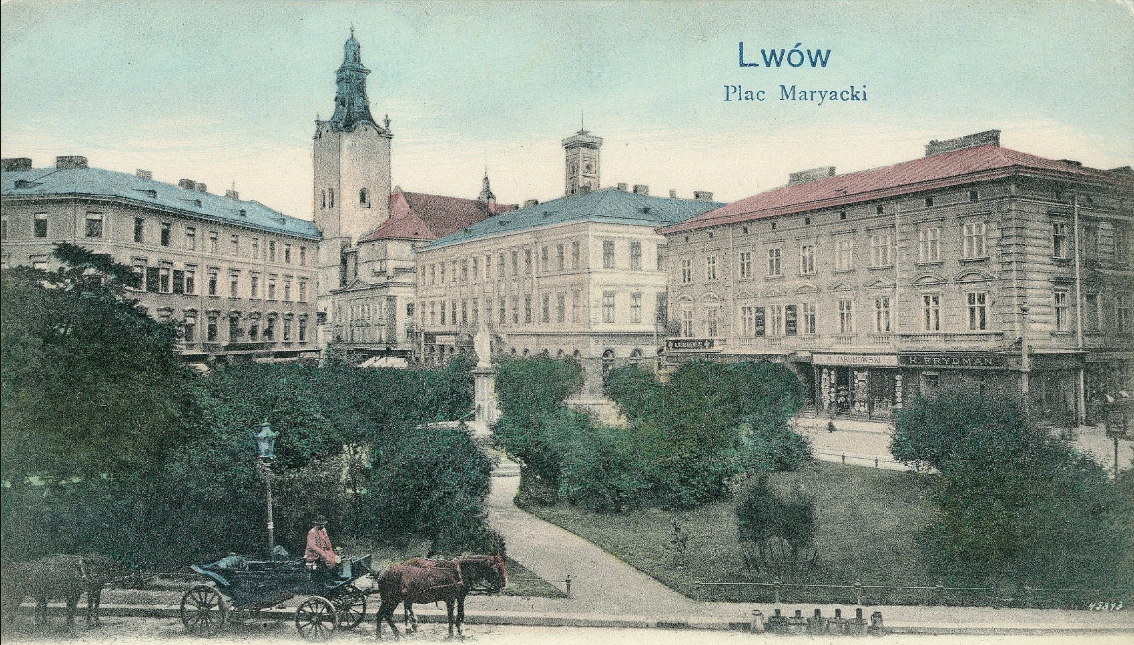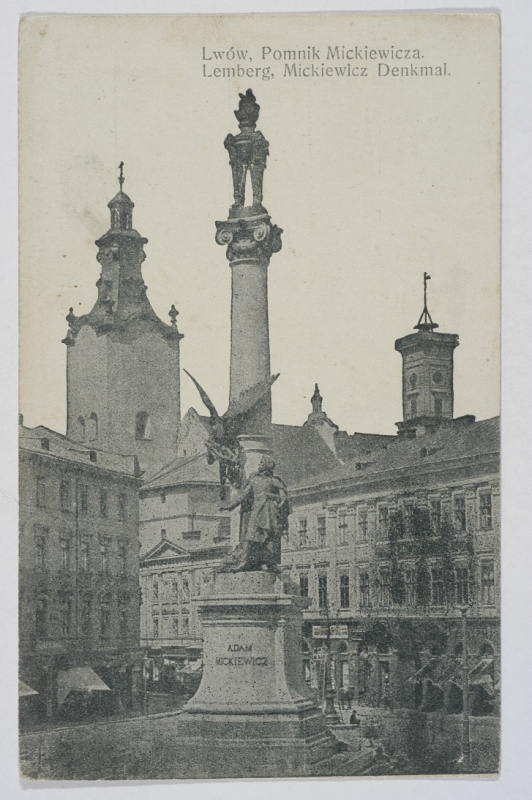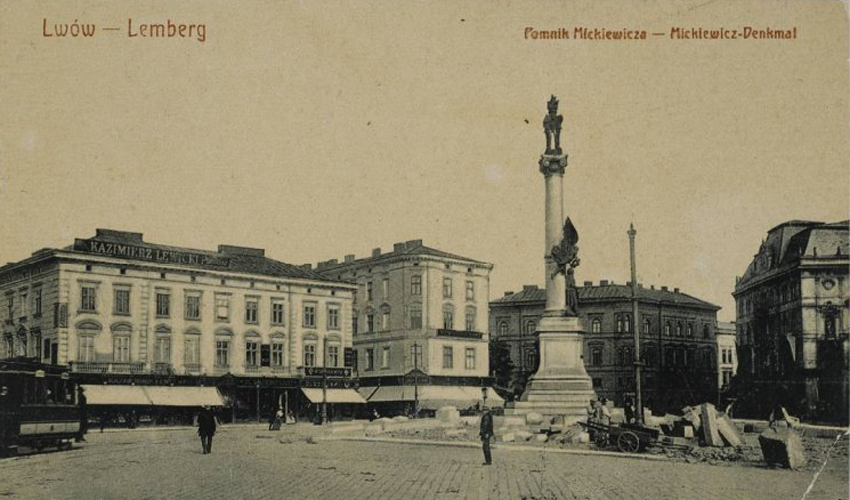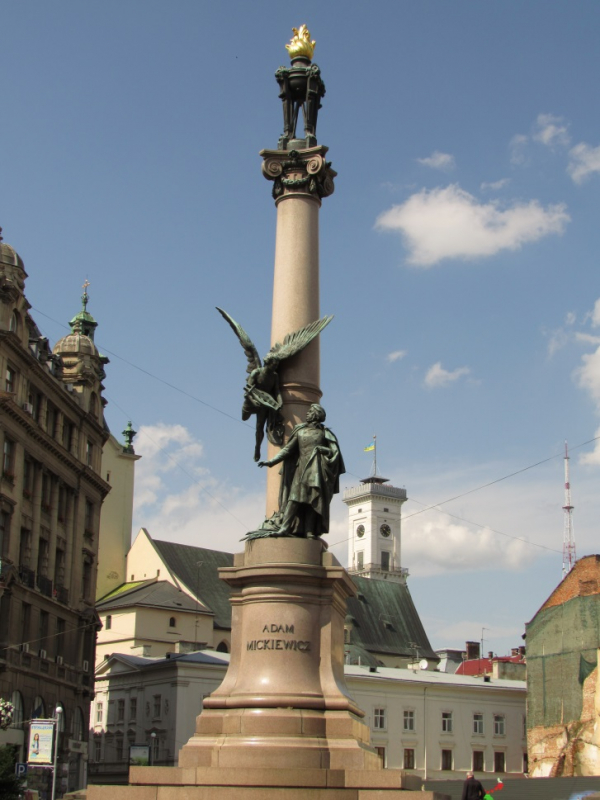Every year on July 17, Lviv Polytechnic National University celebrates the birth of one of its most famous professors – Julian Oktawian Zachariewicz. An outstanding architect, archaeologist, one of the founders of the movement for the protection of ancient monuments and a widely respected Lvivite, who was the heart of any society in the late XIX century, is traditionally in the spotlight of researchers and journalists. Despite a thorough study of famous professor’s works, few people know about his active role in the construction of one of Lviv landmarks – Adam Mickiewicz monument. In Galicia the Polish poet was called a genius and a prophet, so his monument had to be appropriate.
In 1897 the society formed a special committee to organize the celebration of the centennial birth of the poet. On February 20, 1898, Professor Julian Zachariewicz, as a leading expert in the field of architecture, began his work in the committee. In addition to Julian Zachariewicz, the leadership of the committee sent an invitation to professors of Tsisar-Royal Polytechnic School Maksymilian Thullie and Leonard Marconi, as well as to a member of the Polytechnic Society in Lviv, engineer Stefan Liskiewicz-Sheliga to take part in the work on the monument project. Mr. Thullie for various reasons refused to participate. Mr. Marconi joined as an expert sculptor to discuss the details of the future monument.
The most controversial issues, in which Julian Zachariewicz took active part, were the location and appearance of the future Adam Mickiewicz monument. There were a number of options for the location: Adam Krechowiecki, an editor of Gazeta Lwowska, suggested Smolki Square (now P. Hryhorenko Square) or St. Yura Square. There was also an option to build a monument on Trzeciego Maja Street (now Sichovykh Striltsiv). Julian Zachariewicz wanted to place the monument in the heart of the city «in front of the Sejm building, about 300 meters to the front» (now the place of Ivan Franko monument). In response to this proposal, Stefan Liskiewicz-Sheliga said that: «in front of trees, the column would not impress as much as on an open place,» so he suggested «the corner of the Hetman Ramparts from Mariatska Square».
Julian Zachariewicz liked the new idea of placing the monument on the Hetman Ramparts (now Prospekt Svobody), as he said about it on March 4, 1898. In particular, he proposed to place the monument on the site of a flower garden, which at that time was on Mariatska Square, on axis with J. Sobieski Street (now Brativ Rohatyntsiv Street) and M. Kopernika Street (the place where the figure of the Virgin Mary is located today). According to this plan, Mickiewicz monument was to stand in front of the newly built city theater. However the architect Zygmunt Gorgolewski did not like this idea and proposed that the monument was to face the figure of the Virgin Mary and its back – the theater. So the place for the monument was chosen, not without the significant role of Julian Zachariewicz. Finally, on June 9, 1898, Ludwik Ćwikliński, Chairman of the committee, announced that «the city council (of Lviv) is donating a place for the monument chosen by the committee», that is, on the place of the statue of the Virgin Mary, which was decided to move closer to the theater (as it is now).
There has been an equally heated debate how the monument should look like – to be in the form of a column or a monument. Professor Zachariewicz actively opposed the format of the column. Moreover, he criticized the first version of the monument project, proposed by Wacław Szymanowski, who lived in Paris, as too «fantastic and expensive» for the city of Lviv. Julian Zachariewicz’s own vision was to create an allegorical winner statue with a «pool around». He also did not reject the version with the obelisk. For a long time the discussion of this issue provoked a lively debate in the committee and outside it.
In the end, the committee decided that the monument must be a «high column» of about 20 m, worth no more than 60 thousand florins (Austrian currency). A competition was announced to select the best project, with a prize of 600 crowns for the first place and 300 crowns for the second. Later, the award was increased: for the first place – 1 thousand crowns, for the second – 500 crowns, and also added 500 crowns for the third place. Julian Zachariewicz was one of «the committee experts», who were to evaluate the artistic value of the projects and their compliance with the plan of the organizers. Invitations to participate in the competition were sent to such prominent sculptors as: Wacław Szymanowski, Leonard Marconi, Antoni Popiel, Zygmunt Gorgolewski and several other artists, including Alfred Zachariewicz, the son of Julian Zachariewicz. The question remains as to what role professors Julian Zachariewicz and Leonard Marconi played in encouraging Antoni Popel to participate in this competition, which became the high point of Popel’s career.
The first place and the prize in the amount of 1 thousand crowns was awarded to Antoni Popiel’s project entitled Inspiration, which impressed Julian Zachariewicz. Probably, this was the last time professor participated in the creative change of the urban landscape of Lviv. Unfortunately, on December 27, 1898, Julian Zachariewicz died. At the committee meeting on December 30, Ludwik Ćwikliński «warmly remembered» the gone member of the committee, whose speech was heard while standing. Thus, the authority and professional skills of Julian Zachariewicz helped to erect one of the most beautiful monuments to Adam Mickiewicz, which to this day proves the genius of the outstanding Polytechnic.




